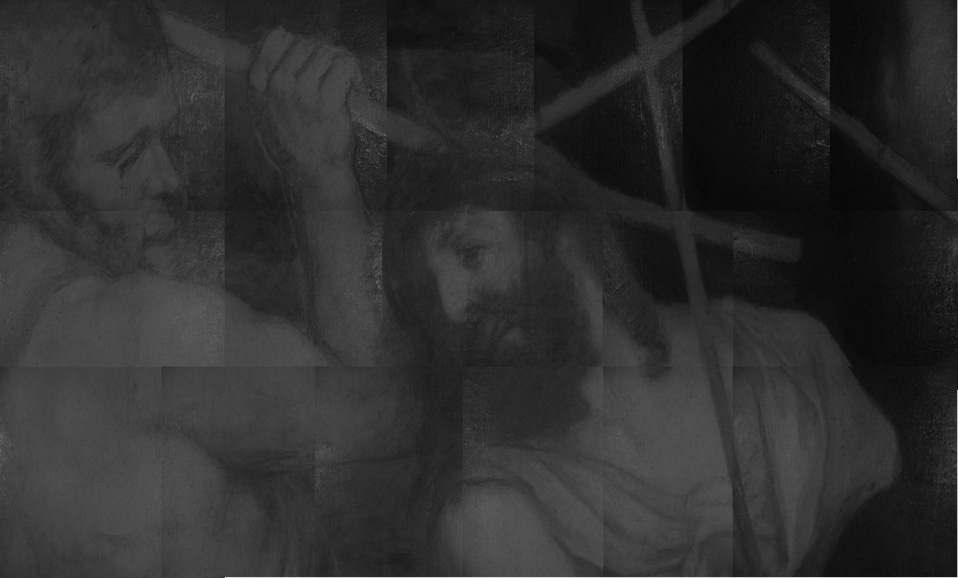Following the study with Diffuse Reflectance Imaging Spectroscopy, the technique of Reflectography Superset was applied in order to study the lower layers of the painting and especially its drafts. It was chosen to study primarily the area of the painting that was of main interest, i.e. the area of the representation with Christ with the crown of thorns as its central theme. This area was divided into 12X12 sections (numbered 1-12 horizontally and A-L vertically) and scanned using the SWIR camera and with the help of the robotic system and specialized software. The operating distance was 50cm, the dimension of each image was 27.7X21.5 mm and the scan step was 150mm to allow for significant overlap between two consecutive images which will also allow for more accurate stitching. The scan was performed for three spectral regions namely a) >1200 nm b) 1750 +/-500 nm and c) 1900 +/- 200 nm. Figure 1 shows a series of stitched characteristic images from rows B-D and columns 2-7 recorded at 1750 +/-500 nm. The images have been processed for normalization, noise removal and a 50pixel margin has been cropped around the perimeter as shadows associated with the presence of the filters appear at the edges. A similar procedure is followed for the set of images regardless of the filter.


